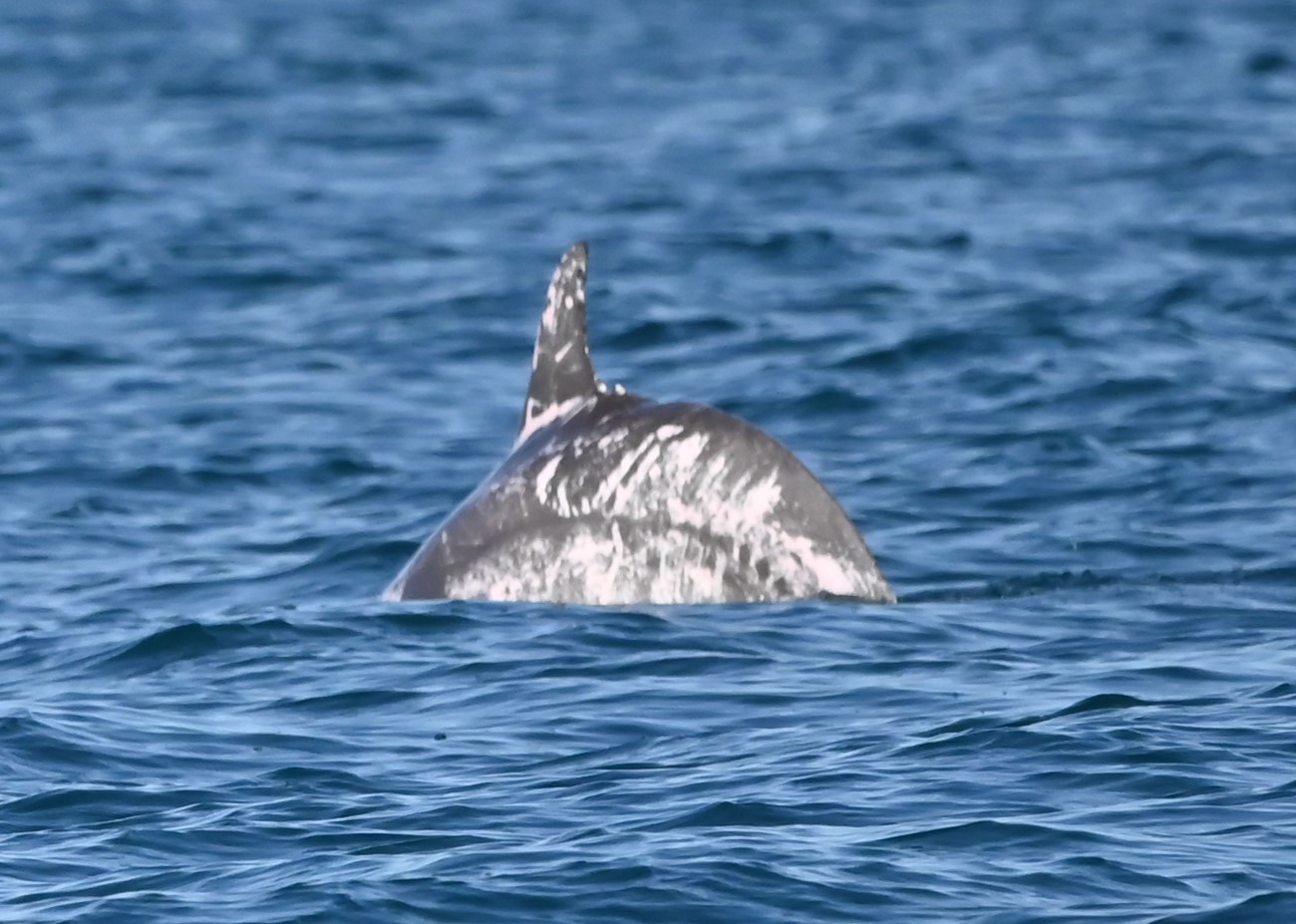A rare, unusually-colored bottlenose dolphin has caught the eye of Australian researchers. Its unique skin pattern has been attributed to piebaldism, earning the marine mammal the nickname “Speckles”. Researchers say that Speckles is the first piebald dolphin ever seen in Australian waters.
Speckles was spotted near a research vessel in Hervey Bay, Queensland, on the afternoon of September 25, 2022. “It was swimming with a group of five other dolphins about 16 [kilometers] [9.9 miles] off Hervey Bay’s Scarness Beach and we noticed it straight away as it had such strange coloration compared to the others,” said doctoral student Georgina Hume of the University of the Sunshine Coast, lead author of a paper documenting Speckles, in a statement. The group was seen to be foraging during the 40-minute period they were observed.
The researchers weren’t actually seeking out funky-patterned cetaceans – they were there to study how dolphins in the area are connected when they happened to come across this unusual creature.
“Speckles leapt out of the water three times in an upright, vertical position, while the rest of the group travelled in a ‘porpoising’ movement,” Hume continued. Porpoising is associated with fast swimming, where cetaceans leap out of the water while speeding along. “This allowed us to get a very clear look at its underside which had many white areas, along with white stripes across its dorsal and lateral sides.”

Speckles sure looks unique!
Image Credit: Georgina Hume
“Piebaldism is similar to albinism and leucism, where the animals typically have white skin, feathers or fur, whereas piebaldism is a partial-loss of pigmentation so the individuals show this patchy coloration,” explained study co-supervisor, behavioral ecologist Dr Alexis Levengood.
Piebaldism occurs due to a lack of cells that produce the pigment melanin in certain areas of the skin. The researchers note that it’s rare to find atypical coloration like this in marine mammals – only 24 individuals have been documented in literature, and just six have been caught on camera. It can come with a whole host of downsides, such as being more easily spotted by both predators and prey, as well as the lack of melanin potentially increasing susceptibility to sun damage and decreasing heat absorption when the water gets chilly.
Luckily, Speckles was observed to be a healthy size – the fact it surfaced multiple times close to the research vessel allowed researchers to estimate its length to be around 3 meters (9.8 feet) – with a healed shark bite on the right side of its peduncle. Speckles’ sex could not be determined. “The clear identification of near-symmetrical white patches and the overall ‘healthy’ appearance of Speckles helped eliminate the possibility that these patches are due to potential disease or stranding-related sunburn,” explained Hume.
“It’s an exciting discovery, as to date, there are no documented sightings of any atypically coloured dolphins in Australian waters,” Levengood said. “There have however been a few sightings of atypical whales. One of these is a well-known albino humpback whale called ‘Migaloo,’ first observed in Byron Bay in the early 1990s and whose all-white status was confirmed from a sighting in Hervey Bay one year later.”
Unfortunately, Speckles was not sighted by researchers again in 2022 after that chance encounter, despite them attempting to find it again the next day. Levengood recommended “genetic sampling of both common bottlenose dolphins and Indo-Pacific bottlenose dolphins in and surrounding Hervey Bay, to assess the population genetics and relatedness of individuals that might be influencing atypical cetacean skin pigmentation.”
The study is published in the journal Aquatic Mammals.
Source Link: "Speckles" The Rare Piebald Bottlenose Dolphin Is A First For Australia